-
 Bitcoin
Bitcoin $115000
0.12% -
 Ethereum
Ethereum $3701
4.50% -
 XRP
XRP $3.081
2.99% -
 Tether USDt
Tether USDt $0.0000
-0.01% -
 BNB
BNB $767.9
1.45% -
 Solana
Solana $169.5
3.13% -
 USDC
USDC $0.9999
0.01% -
 Dogecoin
Dogecoin $0.2106
4.30% -
 TRON
TRON $0.3334
1.62% -
 Cardano
Cardano $0.7564
2.54% -
 Stellar
Stellar $0.4165
0.76% -
 Hyperliquid
Hyperliquid $38.75
0.25% -
 Sui
Sui $3.593
3.00% -
 Chainlink
Chainlink $17.08
3.59% -
 Bitcoin Cash
Bitcoin Cash $573.6
4.35% -
 Hedera
Hedera $0.2508
-0.84% -
 Avalanche
Avalanche $23.07
6.46% -
 Ethena USDe
Ethena USDe $1.001
-0.02% -
 Litecoin
Litecoin $120.8
8.17% -
 UNUS SED LEO
UNUS SED LEO $8.943
-0.32% -
 Toncoin
Toncoin $3.400
-5.60% -
 Shiba Inu
Shiba Inu $0.00001255
1.54% -
 Uniswap
Uniswap $9.908
6.32% -
 Polkadot
Polkadot $3.718
2.10% -
 Monero
Monero $303.0
-0.74% -
 Dai
Dai $0.9999
-0.02% -
 Bitget Token
Bitget Token $4.392
0.91% -
 Cronos
Cronos $0.1403
6.31% -
 Pepe
Pepe $0.00001076
1.13% -
 Aave
Aave $267.2
1.80%
What does the TRIX indicator bottom divergence mean? How long will it rebound after it appears?
TRIX indicator bottom divergence signals a potential bullish reversal when price makes lower lows but TRIX shows higher lows, aiding traders' market entry/exit decisions.
May 26, 2025 at 09:57 am
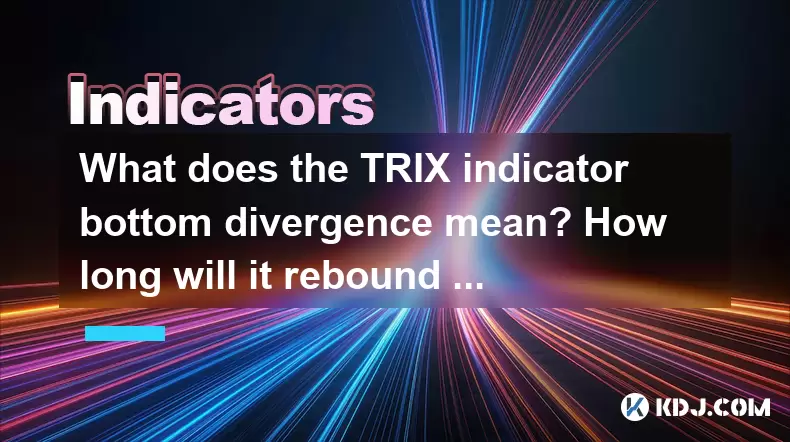
The TRIX indicator is a momentum oscillator used in technical analysis to identify overbought and oversold conditions in the cryptocurrency market. Bottom divergence in the TRIX indicator occurs when the price of a cryptocurrency makes a lower low while the TRIX indicator forms a higher low. This divergence signals a potential reversal from a bearish trend to a bullish one. Understanding the TRIX indicator bottom divergence can help traders make informed decisions about when to enter or exit the market.
How to Identify TRIX Indicator Bottom Divergence
Identifying bottom divergence using the TRIX indicator involves comparing the price action of a cryptocurrency with the movements of the TRIX indicator itself. Here’s a detailed step-by-step process to identify bottom divergence:
- Open your trading platform and ensure that you have access to the TRIX indicator.
- Select the cryptocurrency you want to analyze and apply the TRIX indicator to the chart.
- Observe the price chart and identify two successive lows. These lows should be lower than the previous low, indicating a downtrend.
- Look at the TRIX indicator and find the corresponding lows on the indicator during the same period as the price lows.
- Compare the lows on the price chart with the lows on the TRIX indicator. If the price chart shows lower lows while the TRIX indicator shows higher lows, this is a sign of bottom divergence.
What Does TRIX Indicator Bottom Divergence Signal?
When you identify a bottom divergence using the TRIX indicator, it suggests that the downward momentum in the price is weakening. This weakening momentum, despite the price continuing to make lower lows, indicates that bullish forces are starting to take control. This can be a signal for traders to consider buying the cryptocurrency, as it may be poised for a reversal.
Historical Examples of TRIX Indicator Bottom Divergence
To better understand the TRIX indicator bottom divergence, it's helpful to look at historical examples. For instance, let’s consider Bitcoin (BTC) in the past. During a significant downtrend in early 2019, Bitcoin made lower lows in price around mid-March and late April. However, the TRIX indicator showed higher lows during these same periods. This bottom divergence was followed by a notable upward trend in Bitcoin’s price, starting in early May.
Another example is Ethereum (ETH) in late 2020. Ethereum experienced a downtrend with lower lows in November and early December. Meanwhile, the TRIX indicator displayed higher lows during this period, signaling a bottom divergence. Following this divergence, Ethereum’s price began to rise significantly in mid-December.
How Long Does It Take for a Rebound After TRIX Indicator Bottom Divergence?
The duration of a rebound after a TRIX indicator bottom divergence can vary widely depending on various factors, including overall market conditions, the specific cryptocurrency in question, and the strength of the divergence signal. There is no fixed timeframe for a rebound, but historical data can provide some insights.
In the Bitcoin example from early 2019, the rebound started approximately two weeks after the bottom divergence was identified. The price increase was gradual at first but gained momentum over the following months. In the Ethereum example from late 2020, the rebound began within one week of the divergence and saw a more rapid increase in price.
It’s important to note that these are just examples, and the actual time it takes for a rebound can differ significantly. Traders should use the TRIX indicator bottom divergence as one of many tools in their analysis and not rely on it solely for timing their trades.
How to Use TRIX Indicator Bottom Divergence in Trading Strategies
Incorporating the TRIX indicator bottom divergence into your trading strategies can enhance your decision-making process. Here are some ways to use this signal effectively:
- Confirm with Other Indicators: Use other technical indicators, such as the Relative Strength Index (RSI) or Moving Average Convergence Divergence (MACD), to confirm the bottom divergence signal. If multiple indicators show similar signals, it strengthens the case for a potential rebound.
- Set Entry and Exit Points: Once you identify a bottom divergence, set your entry point slightly above the recent low to avoid false signals. Determine your exit point based on your risk tolerance and the potential upside you anticipate.
- Use Stop-Loss Orders: To manage risk, place a stop-loss order below the recent low. This can help limit your losses if the expected rebound does not materialize.
- Monitor Volume: Pay attention to trading volume. An increase in volume during the rebound can confirm the strength of the bullish reversal.
Risks and Limitations of Using TRIX Indicator Bottom Divergence
While the TRIX indicator bottom divergence can be a powerful tool, it’s not without its risks and limitations. Here are some important considerations:
- False Signals: Like any technical indicator, the TRIX can produce false signals. A bottom divergence might not always lead to a significant rebound, and traders should be prepared for this possibility.
- Market Volatility: Cryptocurrency markets are known for their high volatility. This can affect the reliability of technical indicators, including the TRIX.
- Lag: The TRIX indicator is a lagging indicator, meaning it reflects past price movements. By the time a bottom divergence is identified, the market may have already started to move in the anticipated direction.
- Over-reliance: Relying solely on the TRIX indicator bottom divergence without considering other factors can lead to poor trading decisions. Always use it in conjunction with other analysis methods.
Frequently Asked Questions
Q: Can the TRIX indicator be used for all cryptocurrencies?
A: Yes, the TRIX indicator can be applied to any cryptocurrency. However, its effectiveness may vary depending on the specific market dynamics and liquidity of the cryptocurrency.
Q: Is it necessary to use the TRIX indicator with other technical analysis tools?
A: It is highly recommended to use the TRIX indicator in conjunction with other technical analysis tools to increase the reliability of your trading signals. Combining it with indicators like RSI, MACD, and volume analysis can provide a more comprehensive view of market conditions.
Q: How often should I check for TRIX indicator bottom divergence?
A: The frequency of checking for TRIX indicator bottom divergence depends on your trading style. For short-term traders, daily checks might be necessary, while longer-term traders might find weekly checks sufficient. Always align your analysis with your trading strategy.
Q: Can the TRIX indicator bottom divergence be used in bearish markets?
A: While the TRIX indicator bottom divergence is typically used to identify potential bullish reversals, it can also be useful in bearish markets. In a bearish market, it can signal when a downtrend might be losing steam, potentially leading to a short-term rally or a consolidation period.
Disclaimer:info@kdj.com
The information provided is not trading advice. kdj.com does not assume any responsibility for any investments made based on the information provided in this article. Cryptocurrencies are highly volatile and it is highly recommended that you invest with caution after thorough research!
If you believe that the content used on this website infringes your copyright, please contact us immediately (info@kdj.com) and we will delete it promptly.
- Velo Universe, DEX, and DeFi Security: Navigating the Future of Decentralized Trading
- 2025-08-05 09:25:13
- Bitget Wallet Revolutionizes Solana with Gas-Free Transactions: A New Era for DeFi
- 2025-08-05 09:25:13
- Ozak AI, Crypto Boom, and ROI Potential: Is This the Next Big Thing?
- 2025-08-05 09:25:24
- Solana's ETF Hopes & the All-Time High Chase: Is SOL Set to Soar?
- 2025-08-05 09:25:24
- Coinbase's Brian Armstrong and the Art of Focused Work: A Deep Dive
- 2025-08-05 09:25:30
- Uniswap Price Prediction: Bullish Reversal on the Horizon?
- 2025-08-05 09:25:30
Related knowledge
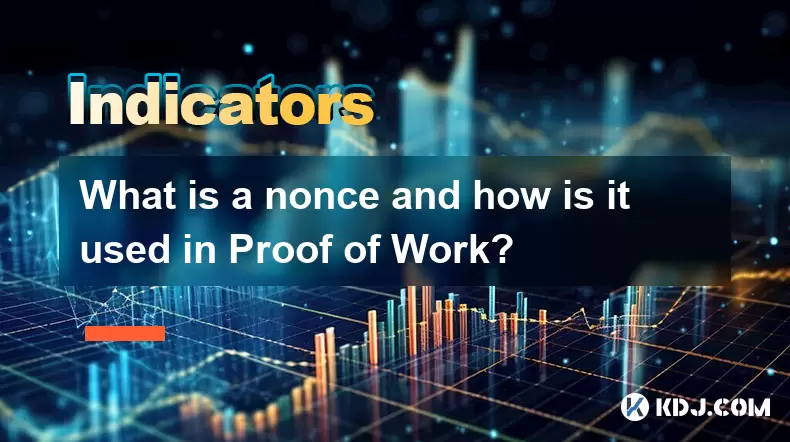
What is a nonce and how is it used in Proof of Work?
Aug 04,2025 at 11:50pm
Understanding the Concept of a Nonce in CryptographyA nonce is a number used only once in cryptographic communication. The term 'nonce' is derived fro...
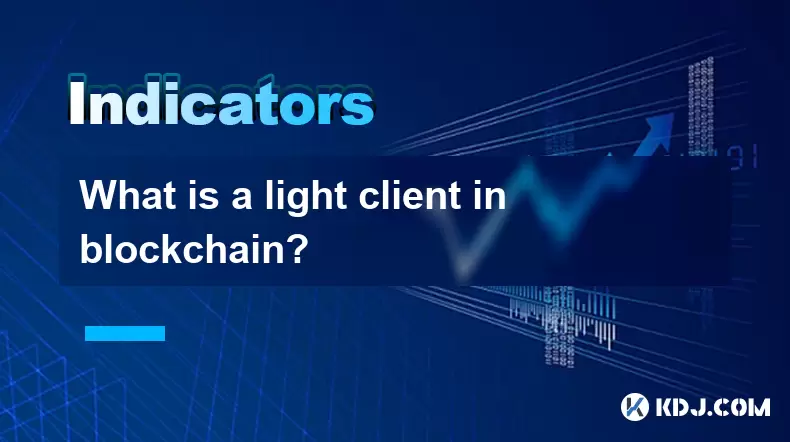
What is a light client in blockchain?
Aug 03,2025 at 10:21am
Understanding the Role of a Light Client in Blockchain NetworksA light client in blockchain refers to a type of node that interacts with the blockchai...
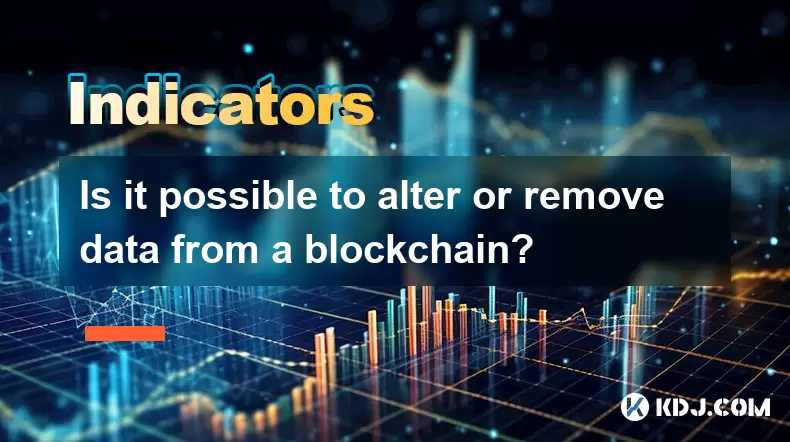
Is it possible to alter or remove data from a blockchain?
Aug 02,2025 at 03:42pm
Understanding the Immutable Nature of BlockchainBlockchain technology is fundamentally designed to ensure data integrity and transparency through its ...
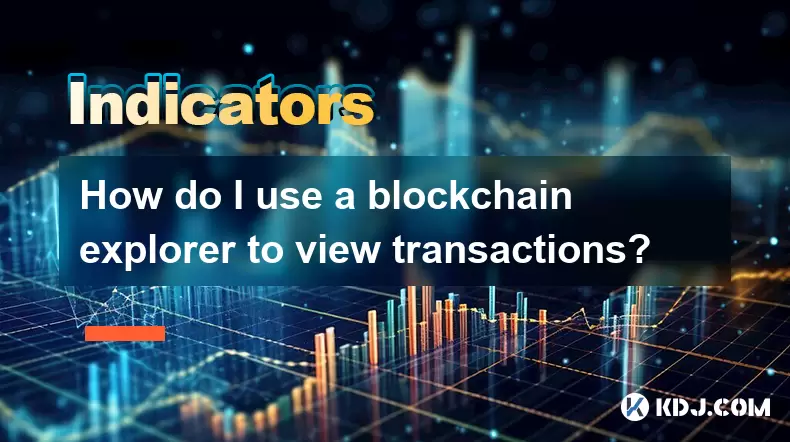
How do I use a blockchain explorer to view transactions?
Aug 02,2025 at 10:01pm
Understanding What a Blockchain Explorer IsA blockchain explorer is a web-based tool that allows users to view all transactions recorded on a blockcha...
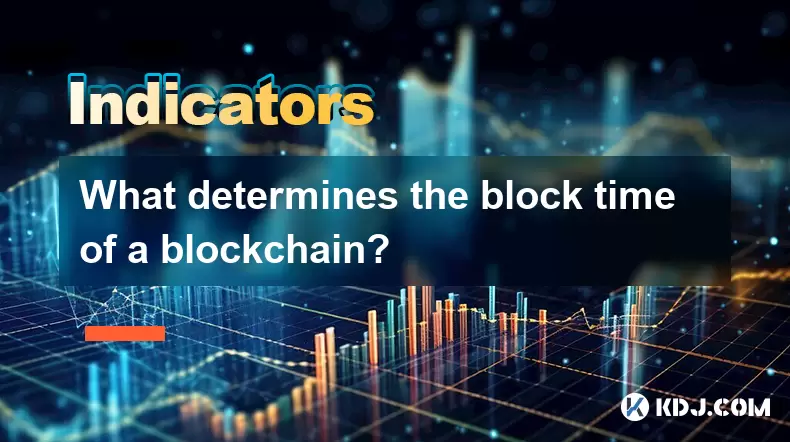
What determines the block time of a blockchain?
Aug 03,2025 at 07:01pm
Understanding Block Time in Blockchain NetworksBlock time refers to the average duration it takes for a new block to be added to a blockchain. This in...
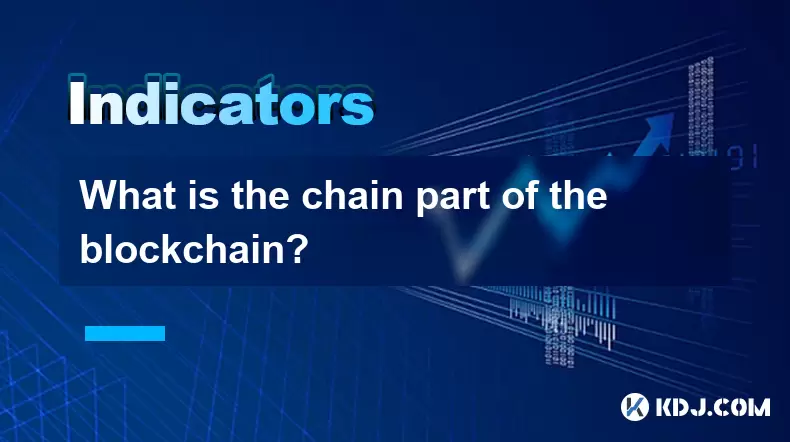
What is the chain part of the blockchain?
Aug 02,2025 at 09:29pm
Understanding the Concept of 'Chain' in BlockchainThe term 'chain' in blockchain refers to the sequential and immutable linkage of data blocks that fo...

What is a nonce and how is it used in Proof of Work?
Aug 04,2025 at 11:50pm
Understanding the Concept of a Nonce in CryptographyA nonce is a number used only once in cryptographic communication. The term 'nonce' is derived fro...

What is a light client in blockchain?
Aug 03,2025 at 10:21am
Understanding the Role of a Light Client in Blockchain NetworksA light client in blockchain refers to a type of node that interacts with the blockchai...

Is it possible to alter or remove data from a blockchain?
Aug 02,2025 at 03:42pm
Understanding the Immutable Nature of BlockchainBlockchain technology is fundamentally designed to ensure data integrity and transparency through its ...

How do I use a blockchain explorer to view transactions?
Aug 02,2025 at 10:01pm
Understanding What a Blockchain Explorer IsA blockchain explorer is a web-based tool that allows users to view all transactions recorded on a blockcha...

What determines the block time of a blockchain?
Aug 03,2025 at 07:01pm
Understanding Block Time in Blockchain NetworksBlock time refers to the average duration it takes for a new block to be added to a blockchain. This in...

What is the chain part of the blockchain?
Aug 02,2025 at 09:29pm
Understanding the Concept of 'Chain' in BlockchainThe term 'chain' in blockchain refers to the sequential and immutable linkage of data blocks that fo...
See all articles

























































































